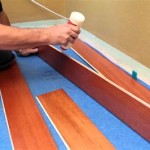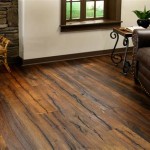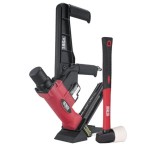Does Cork Flooring Need Underlay? A Comprehensive Guide
The question of whether or not cork flooring requires an underlayment is a common one for homeowners and contractors considering this sustainable and comfortable flooring option. The answer, however, is not always straightforward and depends on a variety of factors. These factors include the type of cork flooring being installed, the subfloor conditions, and the desired performance characteristics of the final flooring system. Understanding these variables is crucial for making an informed decision regarding the necessity of an underlayment.
Cork flooring itself offers inherent benefits that might seem to negate the need for an underlayment in some cases. Cork is naturally resilient, providing cushioning and sound absorption. It also possesses insulating properties, contributing to energy efficiency. However, relying solely on the inherent characteristics of cork flooring might not be sufficient to achieve optimal performance, especially in certain installation scenarios. This article aims to provide a detailed exploration of the pros and cons of using an underlayment with cork flooring, offering insights into when it is essential, beneficial, or potentially unnecessary.
Understanding the Types of Cork Flooring
Before delving into the specifics of underlayments, it is crucial to differentiate between the various types of cork flooring available. The most common types include cork tiles and cork floating floors (also called cork planks). Cork tiles are typically glued directly to the subfloor, while floating cork floors utilize a click-lock mechanism for installation, similar to laminate or engineered hardwood flooring. The installation method significantly influences the need for an underlayment.
Cork tiles, particularly those with a thinner profile, generally benefit from a properly prepared and leveled subfloor. While some installers might opt to glue cork tiles directly to a smooth subfloor, an underlayment can still offer advantages. It can act as a decoupling membrane, minimizing the transmission of minor imperfections from the subfloor to the finished cork surface. This is particularly important in areas prone to movement or where the subfloor is not perfectly even.
Floating cork floors, on the other hand, often incorporate a pre-attached underlayment. This integrated feature simplifies the installation process and addresses certain performance requirements. However, even with a pre-attached underlayment, supplemental underlayment might be necessary in specific situations, such as when dealing with uneven subfloors, seeking enhanced sound insulation, or installing the flooring over radiant heating systems. Understanding the specific features of the chosen cork flooring product is vital for determining the appropriate underlayment strategy.
Evaluating Subfloor Conditions
The condition of the subfloor is a primary determinant of whether an underlayment is necessary. A properly prepared subfloor should be clean, dry, level, and structurally sound. Any imperfections, such as cracks, unevenness, or moisture issues, must be addressed before installing cork flooring. Failure to do so can compromise the flooring's performance and longevity.
If the subfloor exhibits minor imperfections, an underlayment can act as a buffer, smoothing out irregularities and preventing them from telegraphing through to the cork surface. This is especially important for cork tiles, which are directly adhered to the subfloor. An underlayment can help ensure a uniform and aesthetically pleasing finish by mitigating the impact of minor subfloor flaws.
In situations where the subfloor is significantly uneven, requires repair, or has moisture issues, simply adding an underlayment is not a substitute for proper subfloor preparation. Significant imperfections must be addressed through patching, leveling compounds, or other appropriate repair methods. In cases of persistent moisture, a moisture barrier should be installed beneath the underlayment to prevent moisture from damaging the cork flooring.
For concrete subfloors, a moisture test is essential prior to installation. Concrete inherently contains moisture, and excess moisture can lead to mold growth and damage the cork flooring. A moisture barrier underlayment is typically recommended for concrete subfloors, regardless of the cork flooring type, to prevent moisture migration.
Benefits of Using an Underlayment with Cork Flooring
Even when the subfloor is properly prepared, and the cork flooring is of high quality, an underlayment can still offer several benefits. These benefits include improved sound insulation, enhanced thermal insulation, increased comfort underfoot, and additional protection for the flooring.
Sound insulation is a significant advantage of using an underlayment. Cork itself possesses some sound-dampening properties, but an underlayment can further reduce noise transmission between floors. This is particularly beneficial in multi-story buildings or apartments where impact noise can be a concern. Underlayments designed specifically for sound reduction can significantly improve the acoustic environment of a room.
Thermal insulation is another benefit of underlayments. Cork is naturally an insulator, but an underlayment can further enhance its thermal performance. This can contribute to energy savings by reducing heat loss in colder climates and keeping rooms cooler in warmer climates. Underlayments with a high R-value provide better thermal insulation.
Comfort underfoot is enhanced by the cushioning effect of an underlayment. Cork flooring is already comfortable to walk on due to its natural resilience. However, an underlayment adds an extra layer of cushioning, making the floor even more comfortable, especially for extended periods of standing. This is particularly beneficial in kitchens or other areas where people spend a lot of time on their feet.
Finally, an underlayment can provide additional protection for the cork flooring. It can act as a buffer against impacts and heavy foot traffic, reducing wear and tear on the flooring surface. This is particularly important in high-traffic areas where the flooring is subjected to more stress. An underlayment can extend the lifespan of the cork flooring by protecting it from damage.
Choosing the Right Underlayment
Selecting the appropriate underlayment for cork flooring is crucial to achieving optimal performance. Several types of underlayments are available, each with its own set of characteristics and benefits. The choice of underlayment should be based on the specific requirements of the installation and the desired performance characteristics.
Foam underlayments are a common choice for cork flooring. They are relatively inexpensive, easy to install, and provide good cushioning. However, foam underlayments may not offer the best sound insulation or moisture resistance. Higher-density foam underlayments provide better performance than lower-density options.
Cork underlayments are a natural and sustainable option that complements cork flooring. They offer excellent sound insulation, thermal insulation, and cushioning. Cork underlayments are also moisture-resistant and durable. However, they are typically more expensive than foam underlayments.
Rubber underlayments are another option for cork flooring. They are highly durable and offer excellent sound insulation. Rubber underlayments are also resistant to moisture and mold. However, they can be more expensive than foam or cork underlayments.
When choosing an underlayment, it is essential to consider its thickness, density, and composition. Thicker underlayments generally provide better cushioning and sound insulation. Higher-density underlayments are more durable and resistant to compression. The composition of the underlayment will determine its moisture resistance and other performance characteristics.
Installing Cork Flooring with and Without Underlayment: Key Considerations
The installation process for cork flooring varies depending on whether an underlayment is used and the type of cork flooring being installed. When installing cork tiles, the subfloor must be thoroughly cleaned and leveled before applying adhesive. If an underlayment is used, it should be properly adhered to the subfloor before installing the tiles. Proper adhesion is crucial to prevent movement and ensure a long-lasting installation.
For floating cork floors, the installation process is typically simpler. The planks are clicked together, creating a floating floor system. If the flooring has a pre-attached underlayment, no additional underlayment is required unless specified by the manufacturer or desired for enhanced performance. If an additional underlayment is used, it should be rolled out and taped at the seams before installing the flooring.
When installing cork flooring over radiant heating systems, it is essential to choose an underlayment that is compatible with radiant heat. Some underlayments can impede heat transfer, reducing the efficiency of the heating system. Consult with the manufacturer of the radiant heating system and the cork flooring to ensure compatibility.
Regardless of the installation method, it is crucial to follow the manufacturer's instructions carefully. Proper installation is essential for ensuring the flooring's performance and longevity. Failure to follow the instructions can void the warranty and lead to problems down the road.
In conclusion, the decision of whether or not to use an underlayment with cork flooring is dependent on a variety of factors. While cork possesses inherent benefits, an underlayment can enhance its performance and provide additional protection. Evaluating the type of cork flooring, the subfloor conditions, and the desired performance characteristics is vital for making an informed decision. Consulting with a flooring professional can provide valuable guidance and ensure a successful installation.

Complete Guide To Cork Flooring Installation Deerfoot Carpet

Complete Guide To Cork Flooring Installation Deerfoot Carpet

Cork Underlayment 1 2 12mm 102 Sq Ft Box Fund12 Icork Floor

Underlayment Buyer S Guide

Acousticork R60 Cork Underlayment Rolls And S130 Underlay Planks Meets Building Code Inium Association Requirements Pick Up In Los Angeles

Qep 200 Sq Ft 4 Wide X 50 Long 6mm Thick Natural Cork Sound Dampening Underlayment Roll 72000q The Home Depot

3 Decisions To Help You Narrow Down Your Cork Flooring Options Carlisle Wide Plank Floors

Cork Flooring Opus Floors

Cork Underlayment 1 8 3mm 300 Sq Ft Box Fund 3003 Icork Floor

Qep 200 Sq Ft 4 Wide X 50 Long 6mm Thick Natural Cork Sound Dampening Underlayment Roll 72000q The Home Depot
Related Posts








